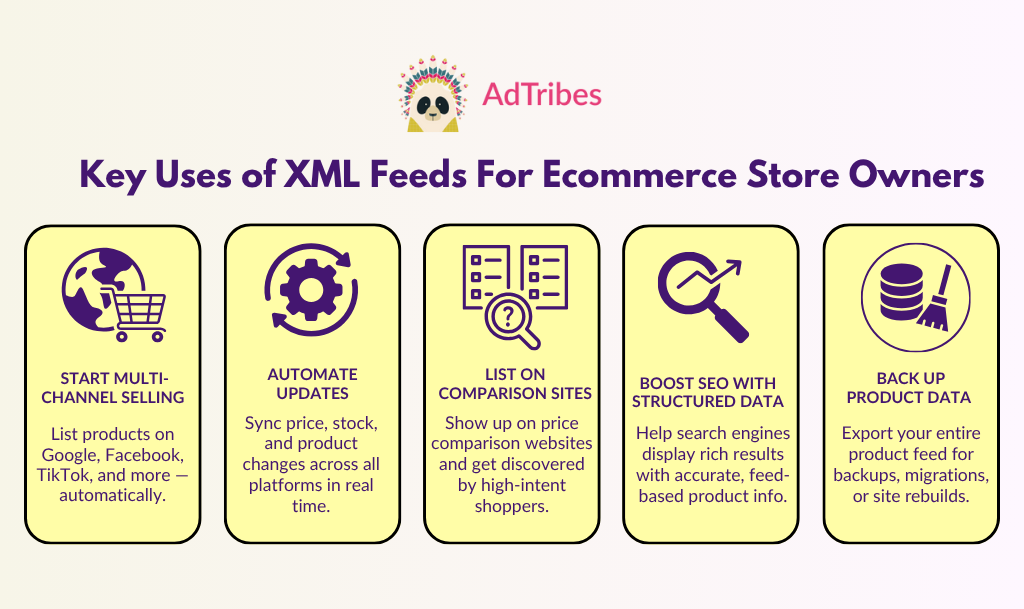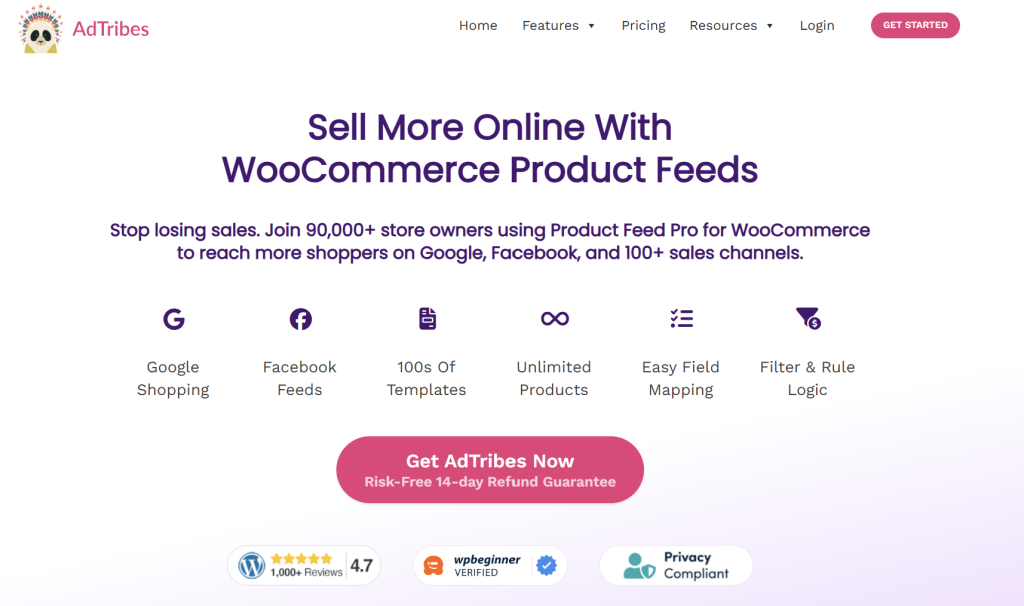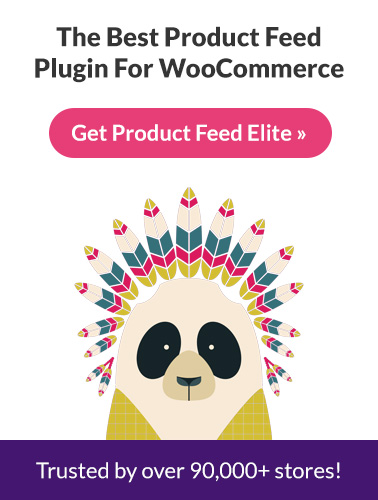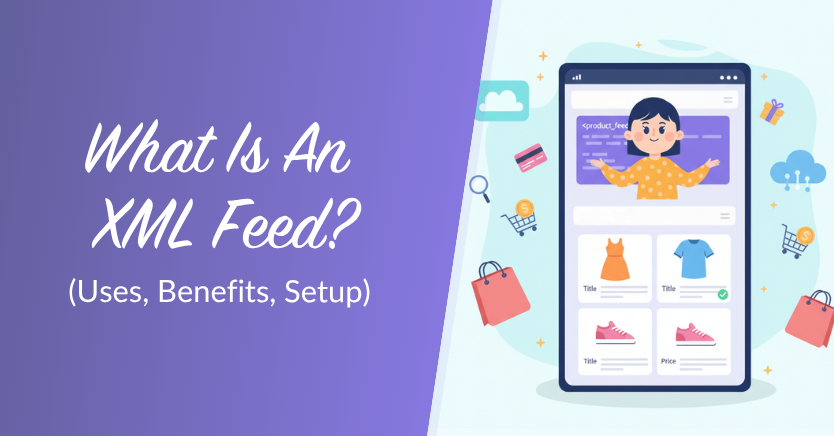
If you’re looking to expand your store’s reach and get your products seen in more places, you’ve likely heard of XML feeds. So, what is an XML feed, and why does it matter so much for growing stores? Simply put, it helps you share your product data automatically with platforms like Google Shopping, Facebook, and price comparison sites.
It’s not as complicated as it seems, promise! In this guide, we’ll walk you through everything you need to know about XML feeds, including their key uses, top benefits, and how you can create one for your WooCommerce store.
Exciting, right? Let’s get into it!
- What Is an XML Feed?
- Key Uses Of XML Feeds For ECommerce Store Owners
- How XML Feeds Can Benefit Your Business
- How To Create An XML Product Feed
- Get Inspired: How WooCommerce Stores Are Using Product Feeds To Grow
- Frequently Asked Questions
What Is an XML Feed?
An XML feed is a type of structured data file that contains your store’s product data, such as price, name, description, and stock availability. You can use it to share your product data to popular sales platforms like Google Shopping, Facebook, Pinterest, and price comparison sites.
It’s essentially a bridge between your store and external sales channels. Instead of manually entering products to get listed, you can use an XML feed to automatically update product information across different platforms in real-time.
This is a game-changer for store owners who want to save time, reduce manual work, and ensure their listings are always up to date across multiple sales channels.
Key Uses Of XML Feeds For ECommerce Store Owners
Now, let’s talk about the key use cases of XML feeds in ecommerce. We’ve briefly touched on this, but let’s go through each one in detail below:
1. Start multi-channel selling
Embracing multi-channel selling is key to maximizing your store’s reach and getting your products seen by more shoppers. XML feeds help you get started easily by letting you send your product data to multiple shopping platforms instead of needing to manually input or upload it. This saves you a huge amount of time and reduces the risk of errors or inconsistencies between listings.
Here are just some of the major platforms that support product feeds in XML:
- Google Shopping
- Facebook Shops
- Instagram Shops
- TikTok Shop
- Bing Ads (Microsoft Shopping)
🎯 POWER TIP: If you’re using a tool like AdTribes to generate product feeds, you can choose from ready-made feed templates for each shopping channel. These templates are tailored to meet the structure and requirements of each channel, helping you set up product feeds faster.
2. Automate updates across multiple sales platforms
After you’ve listed your products in sales channels, it’s just as important to keep these listings updated. XML feeds make this process easy by automatically syncing your store’s data with each platform so you don’t have to update each one manually.
If you’re using AdTribes to manage your product feeds, you can even set custom refresh intervals to control how often product feeds are refreshed:
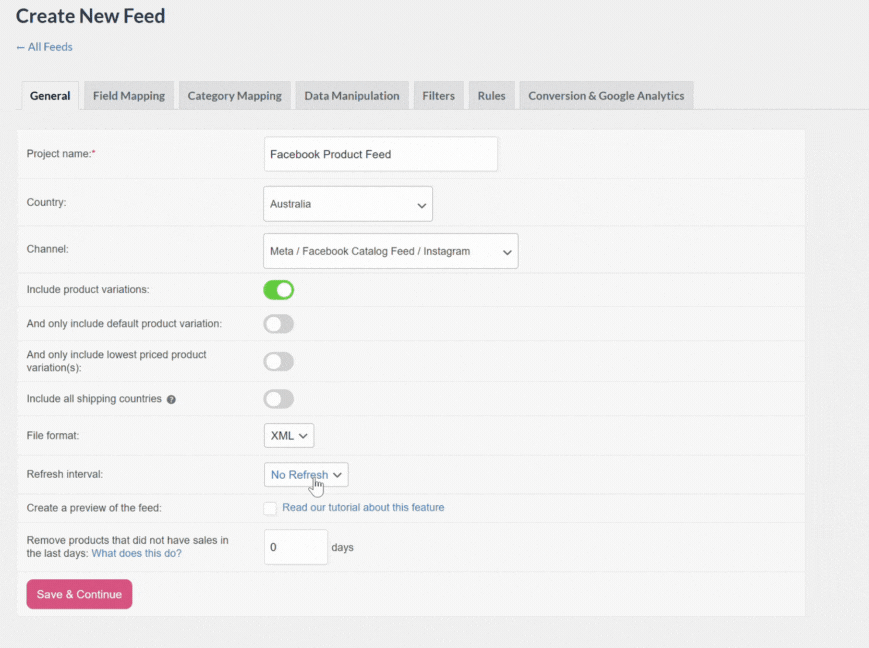
Doing so ensures that:
- Shoppers always see the correct pricing and availability
- You avoid overselling out-of-stock items
- Product descriptions and images stay accurate and aligned
- Seasonal or time-sensitive promotions reflect immediately across all channels
3. Submit product data to price comparison sites
Savvy shoppers hunt for the best deals, and many of them use comparison shopping websites to research a future purchase. These websites help buyers compare prices, reviews, and features before placing an order. Getting your products on these websites can help you capture highly interested buyers, and XML feeds help with that.
Instead of listing your products manually or relying on one-time data imports, an XML feed allows you to send real-time product information directly to comparison shopping engines. This ensures your products are always visible to high-intent buyers looking for the best value.
4. Enhance SEO with structured product data
XML feeds complement your SEO efforts and increase your chances of ranking for relevant searches. When you use XML feeds, product data is organized in a format that search engines and sales platforms can easily understand.
With this structured data, platforms like Google can generate rich snippets with details like prices, ratings, and availability. This is all vital information that makes listings more attractive to browsing shoppers.
If you’ve ever asked what is an XML feed and how it impacts SEO, this is it! With structured data, search engines like Google can better understand your products, helping to:
- Improve click-through rates from search results
- Make your listings stand out visually with extra details
- Provide a better user experience for shoppers
- Help Google index your products faster and more efficiently
5. Create backup copies of store product data
XML feeds are powerful marketing tools, but they’re also useful for internal purposes like backing up and migrating product data. This is especially important if you’re managing a large product catalog with hundreds of SKUs and details. It’s also useful if you’re managing multiple stores and want to recreate existing product setups.
With XML feeds, you can instantly generate a full backup of your store’s product information, including titles, prices, stock levels, categories, and images. This is especially helpful when you’re:
- Moving from a staging site to a live site
- Rebuilding your product catalog
- Troubleshooting feed or store-related issues
- Simply backing up a copy of your setup for peace of mind
💡 GOOD TO KNOW: AdTribes Product Feed Elite includes a built-in Export & Import feature that lets you save your feed configuration and re-import it anytime with just a few clicks. This makes backing up, migrating, or restoring your feed setup easy and seamless. Learn more about this new feature here.
How XML Feeds Can Benefit Your Business
What is an XML feed, and why does it matter for your business? The answer lies in what it frees store owners from: repetitive admin work, outdated listings, and time-consuming product uploads!
Let’s walk through each benefit in detail:
Save time on manual data entry
Just imagine if you had to upload your product details one by one to Google Shopping, Facebook, or comparison shopping sites, then repeat the process every time your price or stock levels change! That process is both time-consuming and error-prone. XML feeds eliminate this manual work entirely by automatically sending your product information to each sales channel.
Improve product visibility across platforms
Getting your products listed on channels like Facebook, TikTok, and Pinterest can boost your store’s visibility. XML feeds make this process easy by automatically syncing your products to these channels. What’s more, product feeds help ensure that your listings are properly formatted and optimized for each platform, improving your chances of being in relevant search results.
This brings us to the next benefit….
Drive more traffic from external channels
With better visibility comes higher traffic. XML feeds help you tap into high-traffic external channels and bring interested shoppers straight to your product pages. Because product feeds keep your listings fresh and accurate, these shoppers arrive with the right expectations (such as price and availability), increasing the likelihood that they’ll make that purchase.
Expand to new markets with ease
Expanding to new markets is naturally the next step as you continue growing your business. This might mean selling to new platforms, targeting international shoppers, or introducing a new product for a new segment. XML feeds help make this process easier by giving you a way to distribute product data in whichever platform it’s needed. It allows you to:
- Create separate feeds with localized pricing, languages, and currencies
- Customize feeds based on product categories or regional preferences
- Adapt feeds to meet specific regional requirements (like currency or language fields)
Overall, XML product feeds can have a big impact on your store’s visibility and growth.
How To Create An XML Product Feed
By now, we’ve answered what is an XML feed is and why your store needs it. The next step is setting it up! Thankfully, plugins like AdTribes make it simple.
With AdTribes, you can easily generate an XML product feed for platforms like Google Shopping, Bing, Facebook, TikTok, and 100+ more platforms.
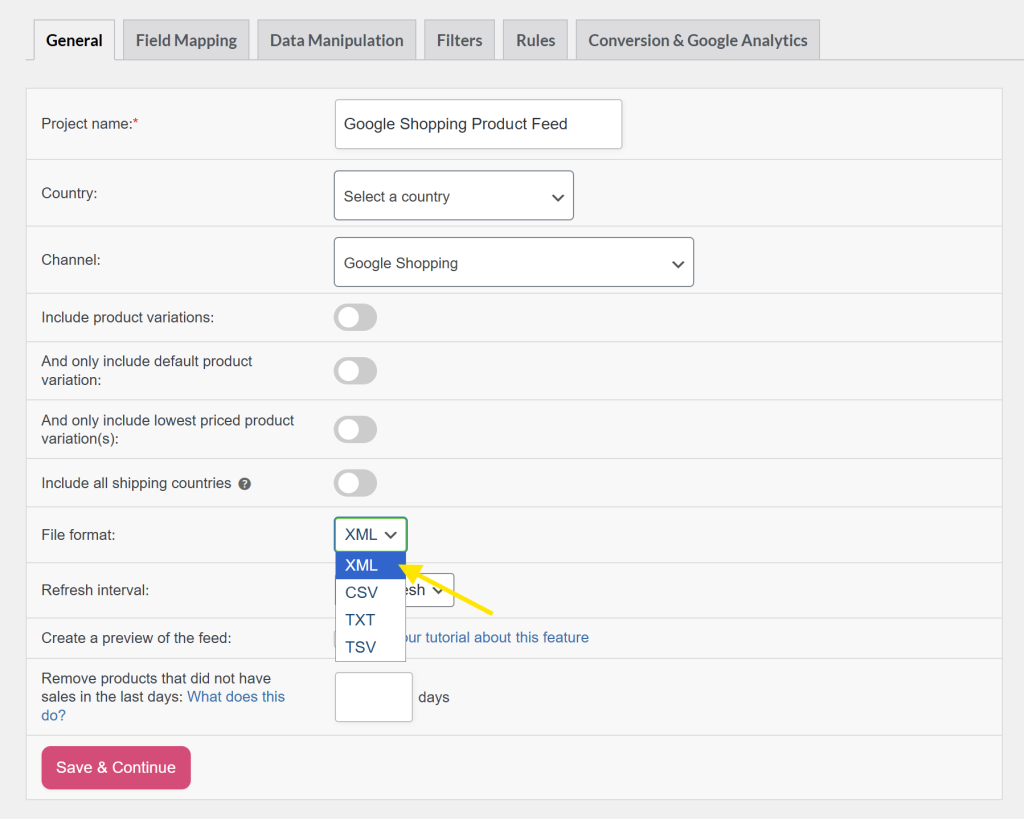
It offers powerful features that make product feed creation and management easy, including:
- Ready-made feed templates for Google Shopping, Facebook, Pinterest, Bing, TikTok Shop, and more
- Advanced filtering and rule setup to include or exclude products based on categories, stock status, pricing, or custom fields
- Automatic refresh intervals to keep your feeds updated in the background
- Export & Import feature to back up, migrate, or restore feed configurations with ease
- Support for multi-language and multi-currency setups for global expansion
Ready to make your first XML product feed? Check out our detailed tutorial here: What Is A Product Feed And How Do You Create One? (Ultimate Guide)

Get Inspired: How WooCommerce Stores Are Using Product Feeds To Grow
Check out how real stores are using AdTribes to grow their reach and boost product visibility:
Frequently Asked Questions
What is XML and why is it used?
XML (eXtensible Markup Language) is used to structure, store, and transport data. In ecommerce, XML is commonly used to share product information like prices, titles, and descriptions with sales platforms or comparison sites. It’s especially helpful for store owners who want to sync their product data across multiple sales channels automatically.
How to view an XML feed?
You can view an XML feed using a web browser or a text editor like Notepad. Simply paste the XML feed’s URL into your browser’s address bar, and it will display your structured data. Most browsers display the XML structure in a readable format so you can quickly scan through the data.
What is the difference between XML and HTML?
HTML (Hypertext Markup Language) controls how content looks in web browsers (e.g., headings, images, paragraphs). XML, on the other hand, is used to describe, store, and transport data in a structured format. While both are markup languages, they serve different purposes.
Wrapping Up
What is an XML feed, and why does it matter to your store? It’s essentially one of the most effective ways to expand your reach, save time, and get your products seen across multiple sales channels. If you’re just starting out with multi-channel selling, XML feeds can help automate and simplify the process. In this guide, we learned:
- What an XML feed is and how it works
- The key uses of XML feeds for ecommerce store owners
- The ecommerce benefits of using XML feeds
- How to create XML feeds with AdTribes
- Quick answers to common XML-related questions
New to product feeds? Check out AdTribes today! This powerful WooCommerce plugin makes it easy to create and manage product feeds across sales channels like Google Shopping, Facebook, Instagram, and more.
We hope this article helped you out! ❤️
